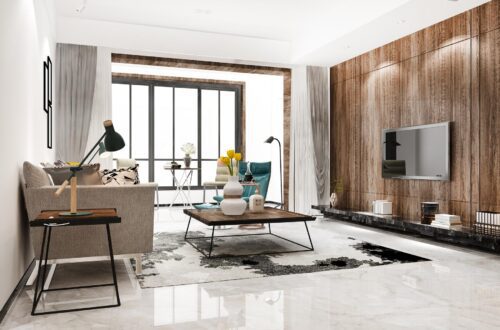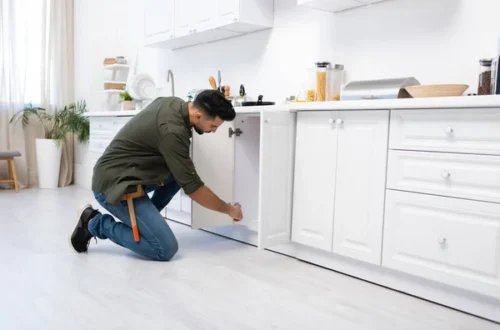A home is a major investment, and for many families, it’s one of the biggest investments they’ll ever make. Anyone looking to build a home should closely consider many factors, including location, utility bills, weather, and more. The materials you use to build a house should also be considered closely. Different materials offer different benefits and drawbacks, which is why many people are now turning to hybrid construction.
So what’s hybrid construction, and why should you care? In the long run, hybrid construction methods can potentially help homeowners lower construction and maintenance costs while maximizing value and comfort. With hybrid construction, multiple materials, including say wooden logs, stone, and brick, are used to build a home or other building. Often, hybrid construction is used to refer to using wood along with another material.
Further, while hybrid construction is sometimes used to refer to construction within a building, it’s often used specifically to reference the exterior. Consider that if someone mentions that they own a “brick home,” they probably don’t mean that the floors and interior walls are all made of brick. Instead, they likely mean the exterior is brick. The same is true for hybrid homes. Often, what people mean is that at least two building materials, say vinyl and wood, are combined to complete the exterior of the home.
With all that said, let’s take a quick look at the benefits of hybrid construction. First, let’s take a quick look at why it’s so important to pay attention to building materials.
A Home is Only as Strong as Its Weakest Materials
They say a team is only as strong as its weakest link. Fair enough, and the same is arguably true for buildings. A home, office building, or another type of building will only be as strong as the weakest materials used. Likewise, a home is only as warm as its least insulated portion, and so on and so forth.
Of course, we should be careful when considering proverbs and adages as they often can’t be taken too literally. That’s certainly true in this case. Still, when it comes to building materials, it’s important to ensure that every material is up to the task.
The Top Benefits of Using Hybrid Construction
First and foremost, hybrid construction allows you to tap into the benefits of different building materials. For example, you might want to use logs for the face of a building, but in an effort to save money, you may opt for vinyl on the side to save money on construction.
When considering the benefits and drawbacks of each material, it’s smart to consider each material individually. Logs, for example, enjoy the following benefits:
- Rustic looks and charm.
- Logs can be harvested sustainably.
- Can last a long time.
- Offers good insulation properties.
As you can see, using logs as a construction material is often a great idea. As far as building materials go, logs rank among the best. However, while logs offer great value in many cases, they tend to be more expensive than building with vinyl siding and the like. With the right large cabin kits, however, you can often reduce the costs of log construction. That said, you may still opt to use other materials, such as vinyl siding, even with a kit.
Yet vinyl siding has drawbacks:
- Poor aesthetics in some eyes
- May not improve your home’s value
- Mediocre insulation properties
Don’t take the above as meaning that vinyl siding is a bad choice. Far from it, modern vinyl siding is a great building material and far better than what most people throughout much of history got to enjoy. Still, vinyl siding does have some serious drawbacks, especially compared to premium materials, like logs.
Fortunately, with hybrid construction, you can combine the benefits and reduce the drawbacks of different materials. You might use logs for the front of your home, while using vinyl for the back, for example.
Improve the Value of Your Property
The right choices can go a long way toward improving the value of your property. Unfortunately, poor choices could ultimately reduce your property’s potential. One of the most important decisions you’ll have to make is what type of exterior building material you should use.
Building materials can certainly have a big impact on the value of a home or other property, and it goes beyond “mere” aesthetics. Your choice of building materials could have major consequences regarding utility bills, maintenance, and other costs. If you build a well-insulated log cabin that saves an average of say $100 a month in utility costs, that could ultimately end up reflected in the selling price should you later sell your home.
Develop a Good Sustainability Profile
If you want to build a sustainable home, you’ll have to go above and beyond slapping on a solar panel and calling it a day. While such simple steps can certainly help, if you really want to optimize sustainability, you need to take it into account before you ever even break ground.
When you think of log cabins and wooden homes, your mind might first conjure up images of clear-cut forests and the like. Certainly, harvesting wood can be bad for the environment if done incorrectly. However, if properly harvested, wood may greatly reduce, if not eliminate, damage to the environment. Whereas there’s a finite amount of aluminum, steel, and oil, among many other natural resources, trees can replenish themselves with enough time and proper growing conditions.
That said, wood is not the only sustainable material, and in some cases, using different materials, especially as part of hybrid construction or as part of a holistic approach to sustainability, may improve your environmental footprint. You can get wood shingles, for example, but a smartly-crafted metal roof may last decades longer and afterward could be recyclable.
Myriad Considerations Often Call for Myriad Materials
At the end of the day, hybrid construction can be a useful tool for building the home of your dreams. Ditto for large cabin kits and the like. Rather than pinning yourself down to one material type, such as logs or brick, consider using multiple materials when and where appropriate. An open perspective could help you build the home of your dreams.





